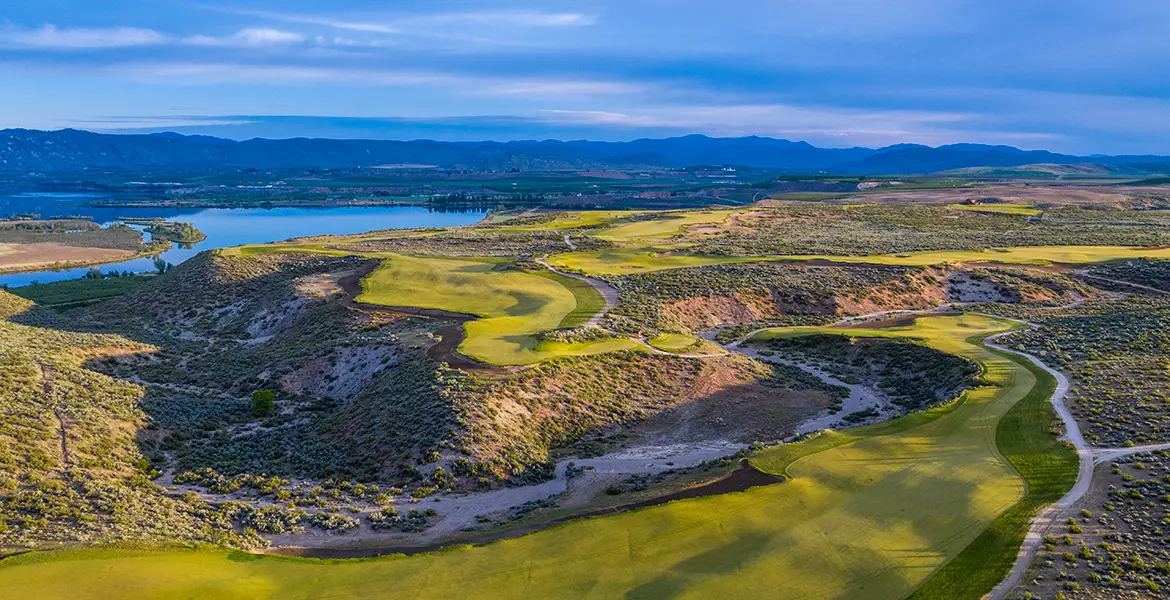Bobby Jones is widely regarded as one of golf’s foremost gentlemen. The stories of Jones’s sportsmanship and convivial manner are legion, and the reverence with which he is lauded seldom flags. But there was one hole that caused the good Mr. Jones to completely lose it: the 11th hole of the Old Course at St. Andrews.
Jones was making his debut in the Open Championship in 1921—and struggling. After the first two rounds he found himself outside the top 10. Thanks to the 11th hole, formally named “High (In)” but also referred to as the Eden hole, he never finished round three. Instead, after four earnest attempts to exit the Hill bunker, Jones tore up his scorecard and exited the course altogether. Jones later called the episode “the most inglorious failure of my golfing life.”
Bobby Jones is far from the only golfer to have experienced difficulty in his or her attempts to survive a visit to Eden—so called because of its proximity to the Eden River estuary, which sits immediately behind the green. It’s a beast of a par three. And a beauty.

The Stats
- Par three
- 153, 164, 174 yards
- Two greenside bunkers (known as the “Strath” and “Hill” bunkers)
- Stroke Index: 7 (Men), 17 (Women)
Hole Description
The 11th at the Old Course is a medium-length par three that plays over a section of the 7th fairway to a well-protected and elevated green. In front, the green is guarded by a deep pot bunker (Strath), and on the front and left, another deep bunker (Hill) awaits errant shots. The putting surface (a double green shared with the par-four 7th) slopes sharply from back to front. Behind the green is a steep drop-off down to the edge of the Eden River. There’s another bunker in play, the Cockleshell bunker, but only a very poor shot will find its way there (and heaven help those players).
What Makes It Great
Though the scorecard identifies it as a one-shotter, caddies at St. Andrews like to call the 11th hole the course’s most difficult par five. The hole just oozes peril. If it were any shorter, it might not be quite so menacing. But at 160-plus yards, often into the gusty winds that blow in from the estuary, tee shots require a solid strike. Anything less will bring one or more of the hole’s defensive elements into play, and with them, the chance of disaster.
The Strath bunker, named for golf professional Davie Strath (who reportedly felt no love for the pit), is one of the deepest and cruelest on the course. You will not see the putting surface when you’re standing in this bunker, and your ball may never see it, either, unless you have a deft touch with a sand wedge. The equally deep Hill bunker that ended Jones’s first run at a Claret Jug takes no prisoners, either. Not a pot bunker, it extends some twenty feet along the front-left edge of the green and is ideally positioned to capture any shots that are pulled or sail on the wind in its direction.
In truth, you might actually prefer to wind up in one of these nasty beaches of despair than go long. For if your tee shot rolls off the back of the green and down the steep hill there, you’ll need to be a magician to get your next shot safely onto the putting surface. The fact that this hole, a par three, should be the stroke index 7 hole for men speaks well to its difficulty.
How to Play It
In a nutshell: Hit a near-perfect shot to the middle of the green in whatever wind happens to be blowing. The sharply sloping green will still make the process of two-putting for par a challenge. (Don’t even dream about birdieing this hole—the only time that happens is by accident.) Should you miss the green, the best advice you’ll receive is to pray because there is really only one safe place to miss it—short. But on firm links turf, even achieving that result will not be easy. In your attempt to end up short you might very easily end up smack in the middle of the damning Strath bunker. By avoiding Strath and being short, you’ll have an uphill chip to a green that will be receptive to shots from that direction. You would very possibly be able to two-putt and walk away with a simple bogey—a score that many would give their eyeteeth for there.
The two bunkers at the 11th are deep enough to have earned comparisons to oceanic trenches. If you find yourself in one of them, you’ll need to quickly ascertain whether you have a route out, recognizing that your best escape may not take you toward the hole. Remember: From the front of the green, you have at least some chance of getting up and down, so playing to that area from these bunkers is not the worst play. It certainly beats taking four swipes and not escaping at all. If you believe that you have enough room to elevate the ball high enough to advance it onto the green, you’ll want to aim your explosion shot carefully. It is not uncommon for shots played too aggressively from the Hill bunker to wind up at the bottom of Strath—a quinella that no one wants to win.
This is also one of the chief dangers when you’re playing from behind the green. Any pitch played with too much force risks running off the front of the green—and possibly into Strath. Fortunately, this is a double green, and you almost always have the option of playing away from the hole location to a safe part of the green.
When you do reach the putting surface, you’ll still have a lot of work to do. Though a section of the back-left of the green was softened a few years ago to create additional cupping locations there (dangerously close to Hill), the center of the green still slopes sharply. If you are putting from above the hole with the wind behind you, there is good reason to worry about the ball rolling straight off the front edge and into Strath. Sidehill putts on this green aren’t much easier. In the end, that kind of thing is what makes this hole so fantastic. Every shot you could possibly face there, with the exception of a tap-in, will generate tension, concern, fear. But for the lucky few, it may also lead to exhilaration.

Other Eden Holes
The Eden hole is considered a template hole, so it has often been imitated in whole or in part. A few holes that are considered variations on the original include the 11th at Fishers Island Club, the 13th at National Golf Links, and the 15th at Yale Golf Club. But it’s Tom Doak’s 2nd at the Old Macdonald course at Bandon Dunes that pays homage the best.
Have you done battle with an Eden hole? Share your tale in the comments.






